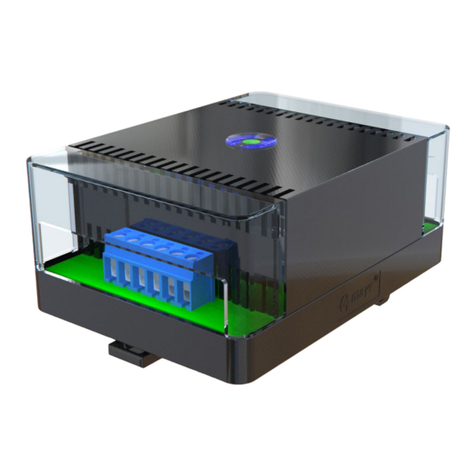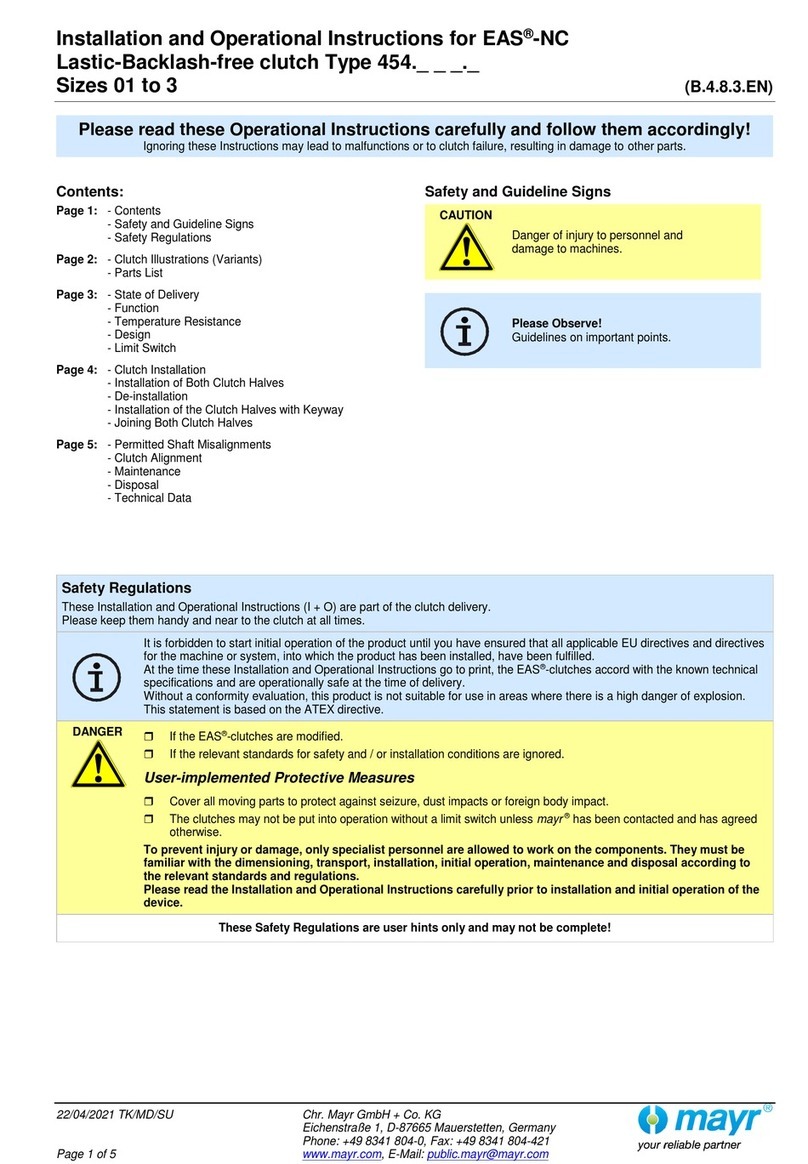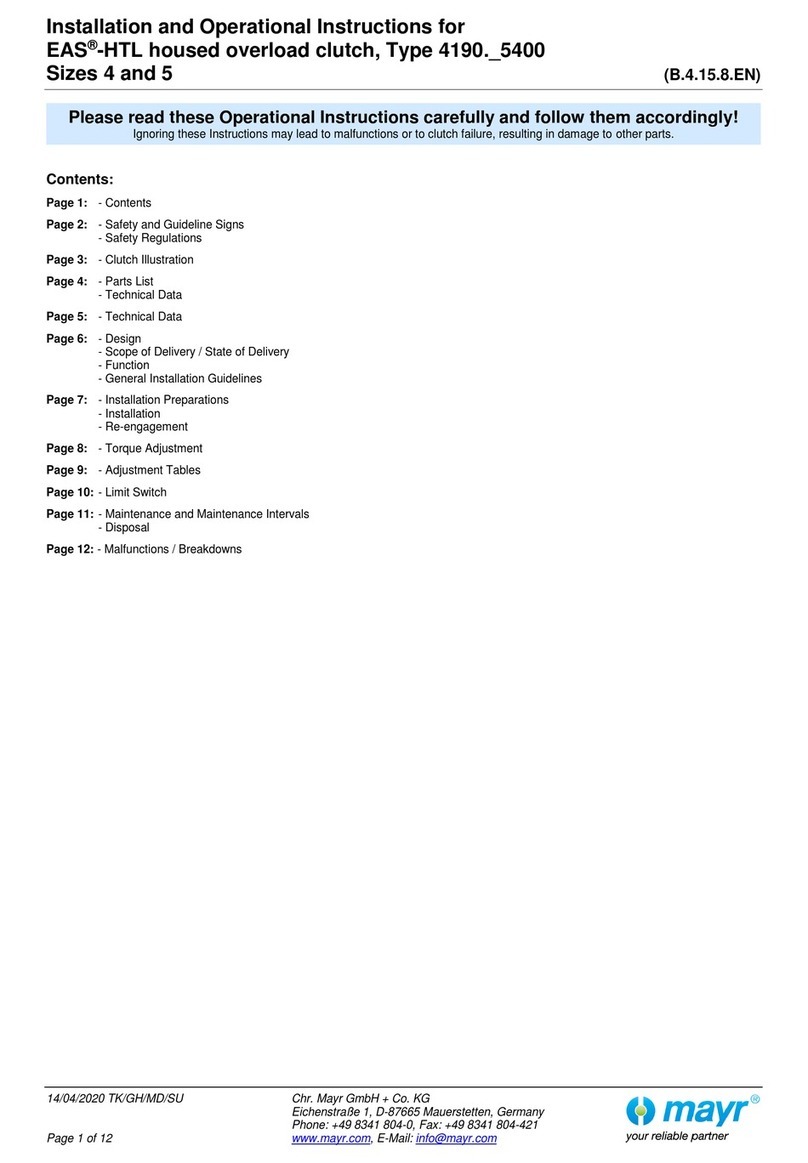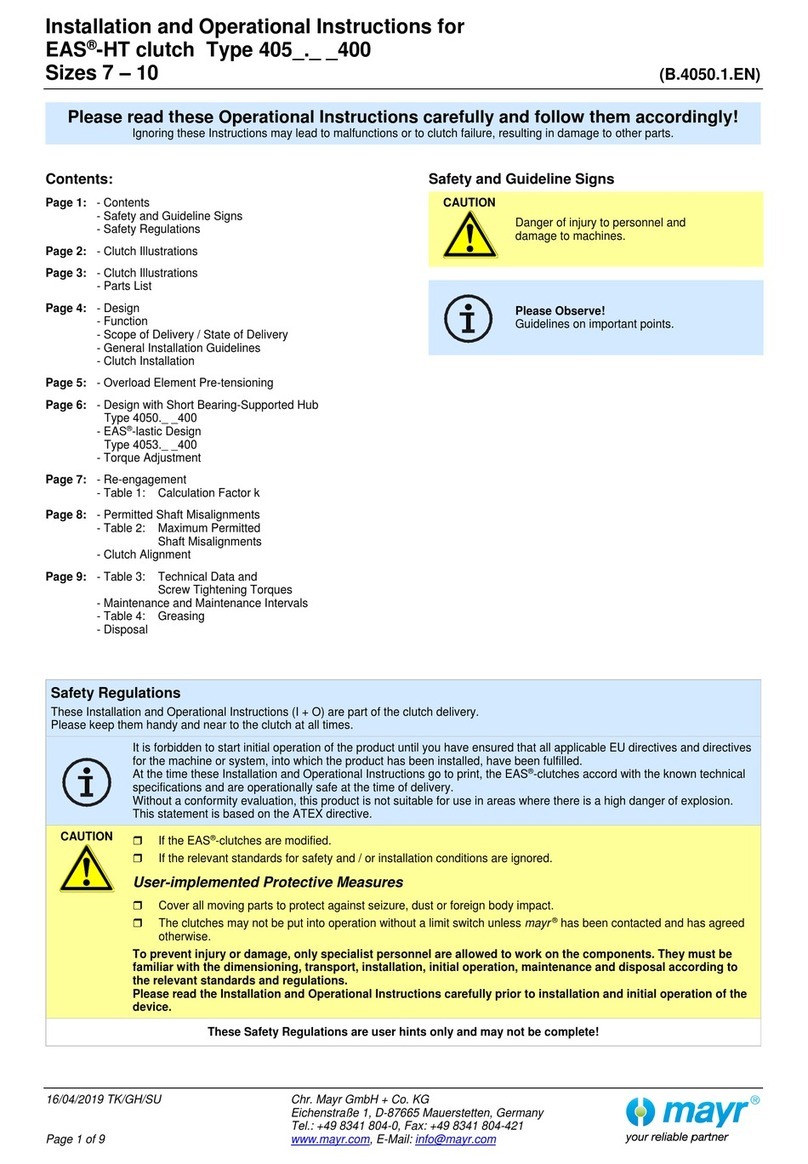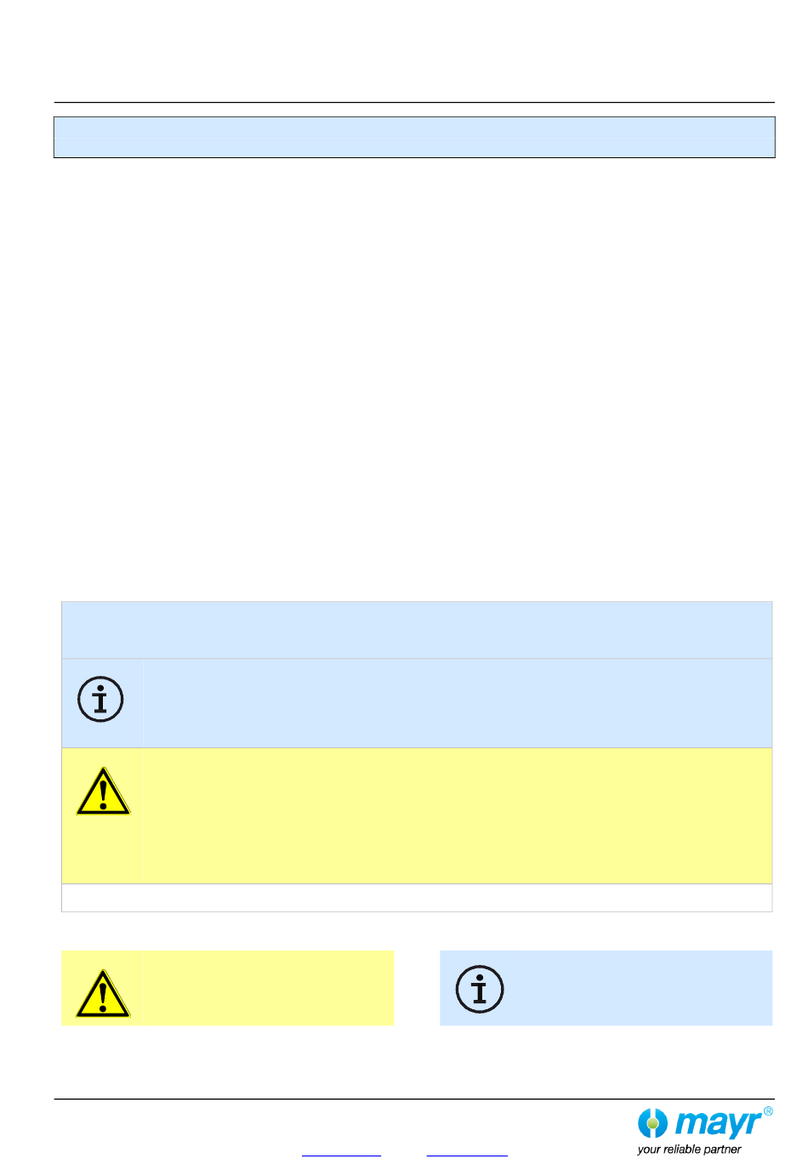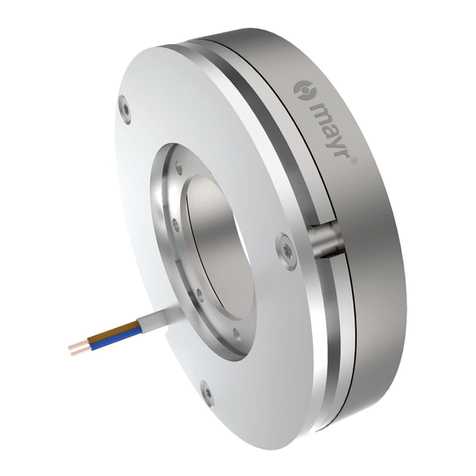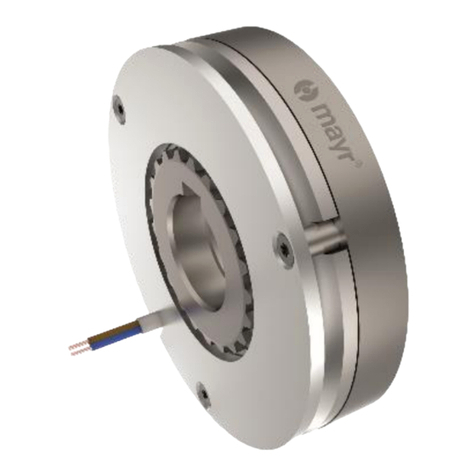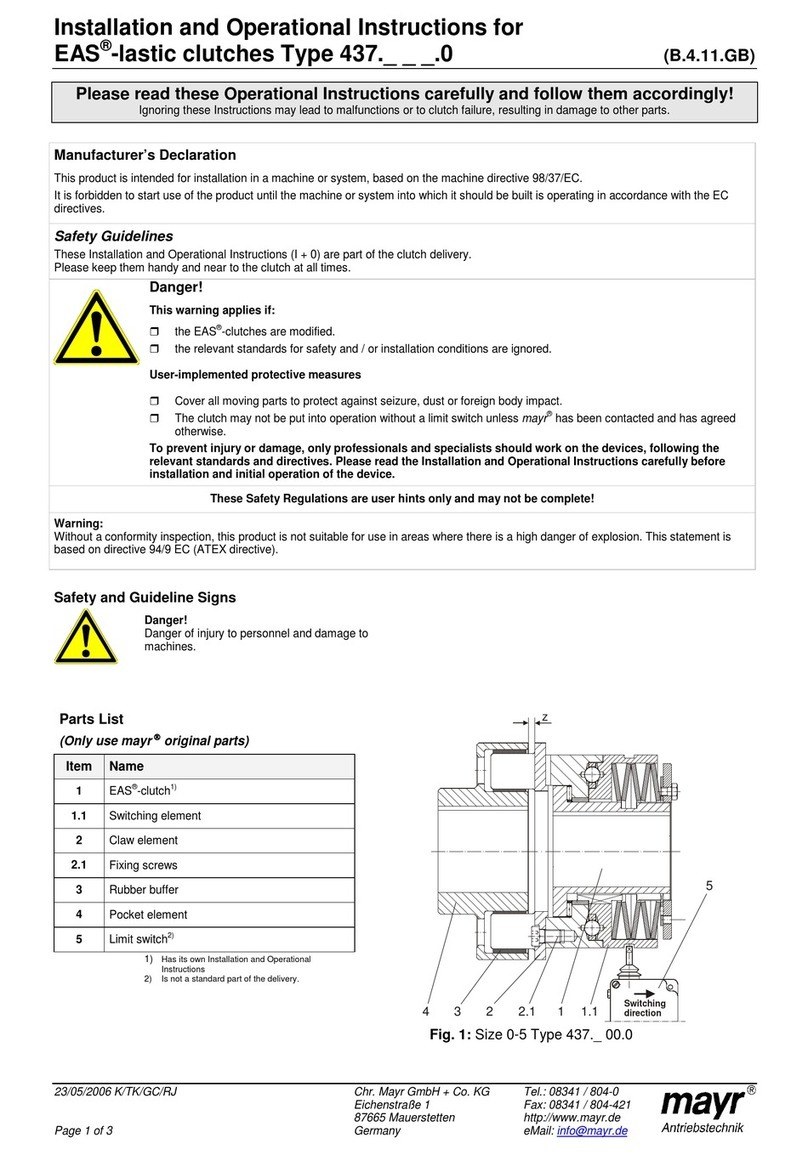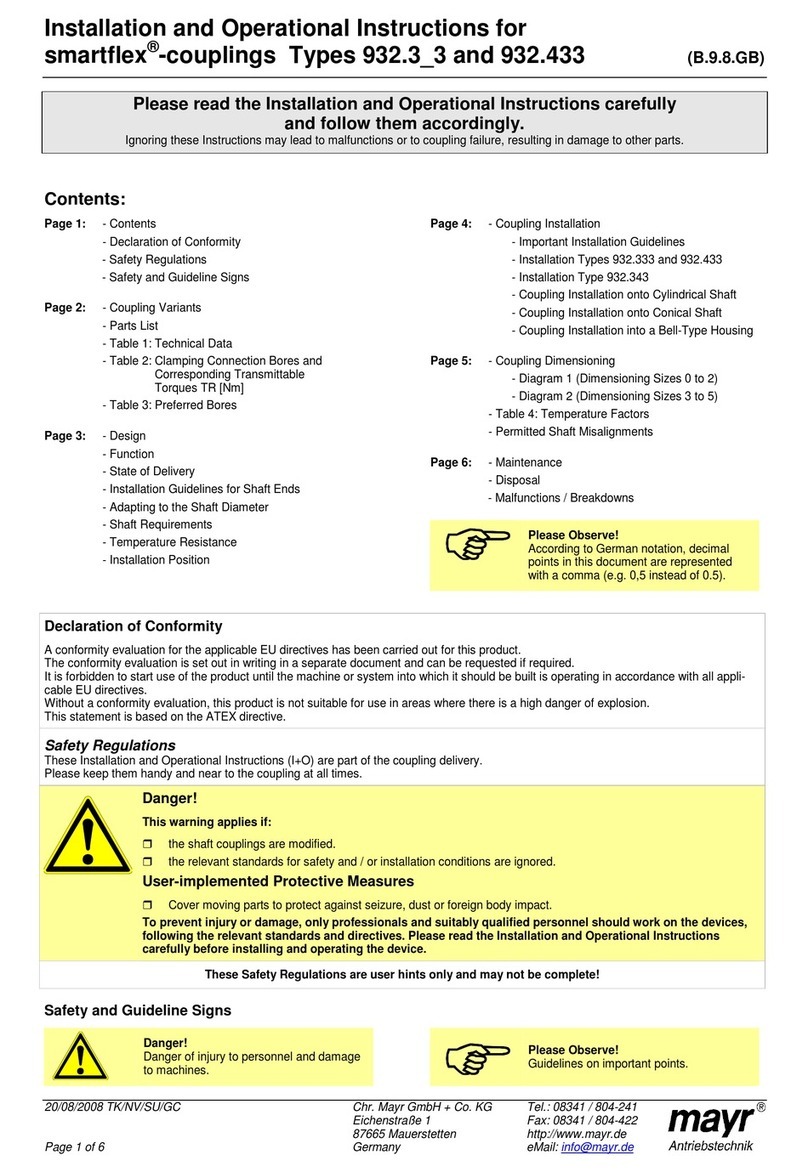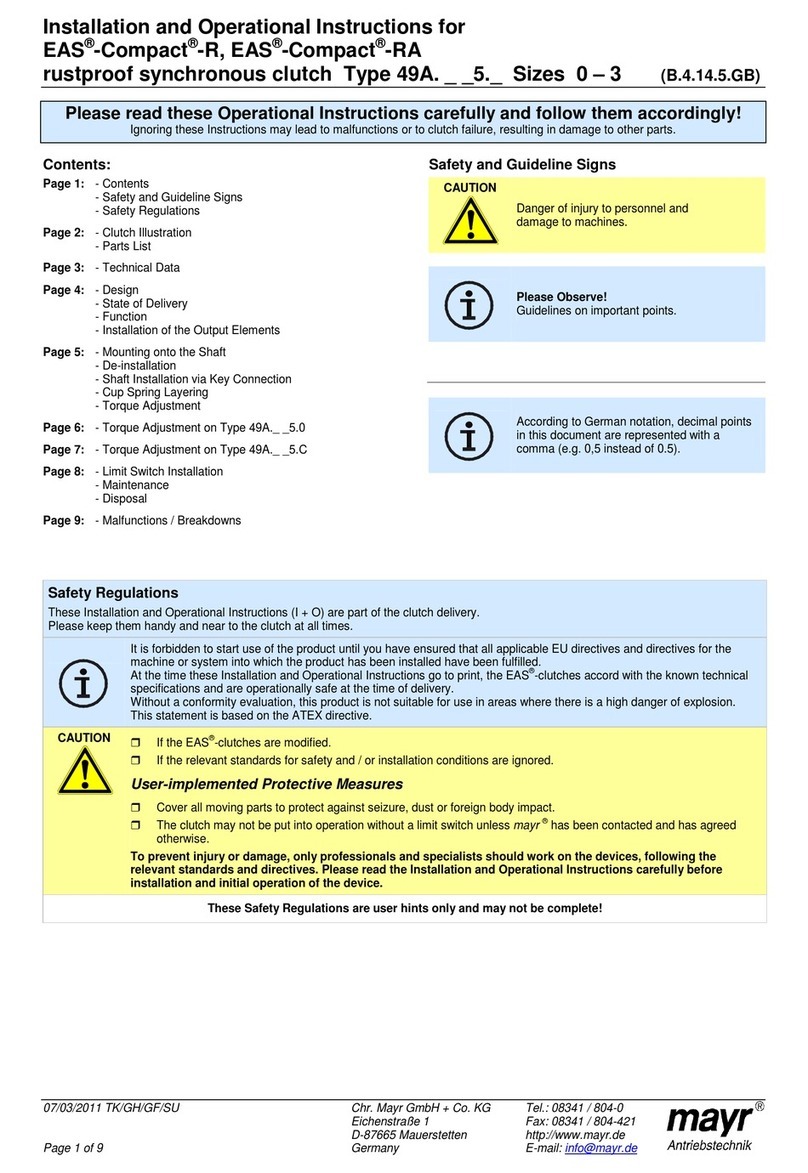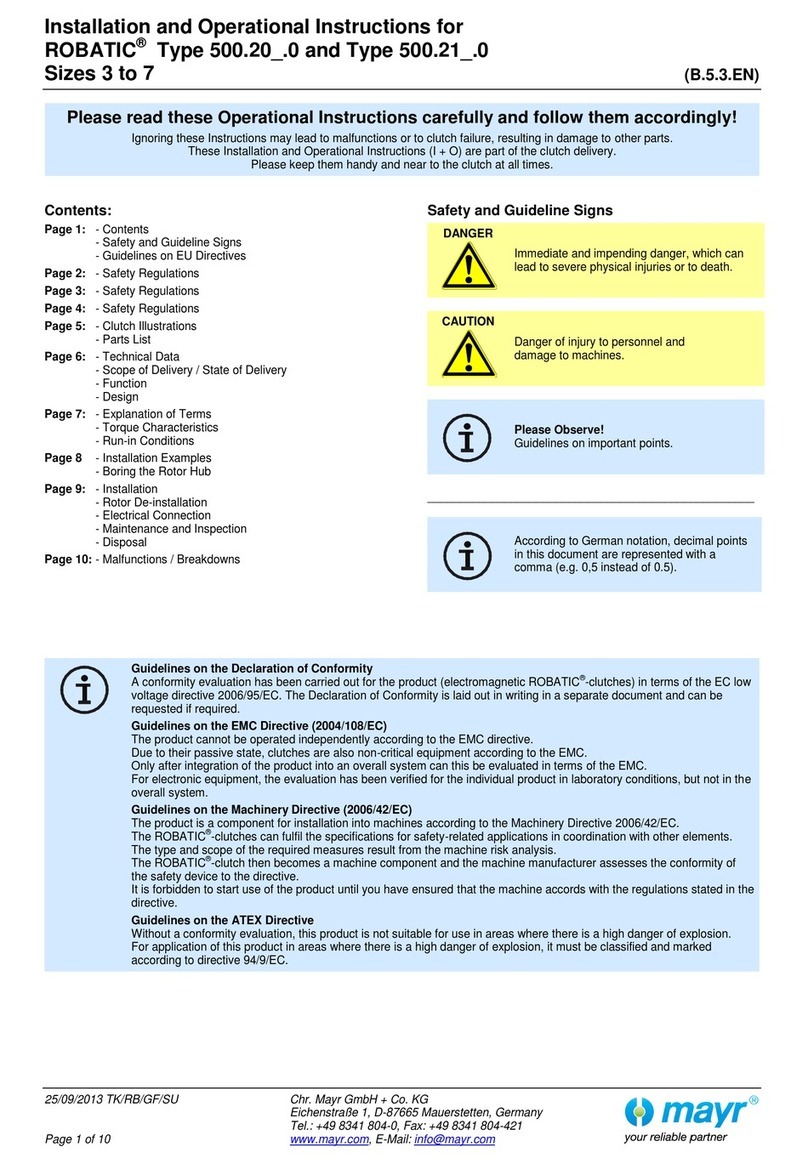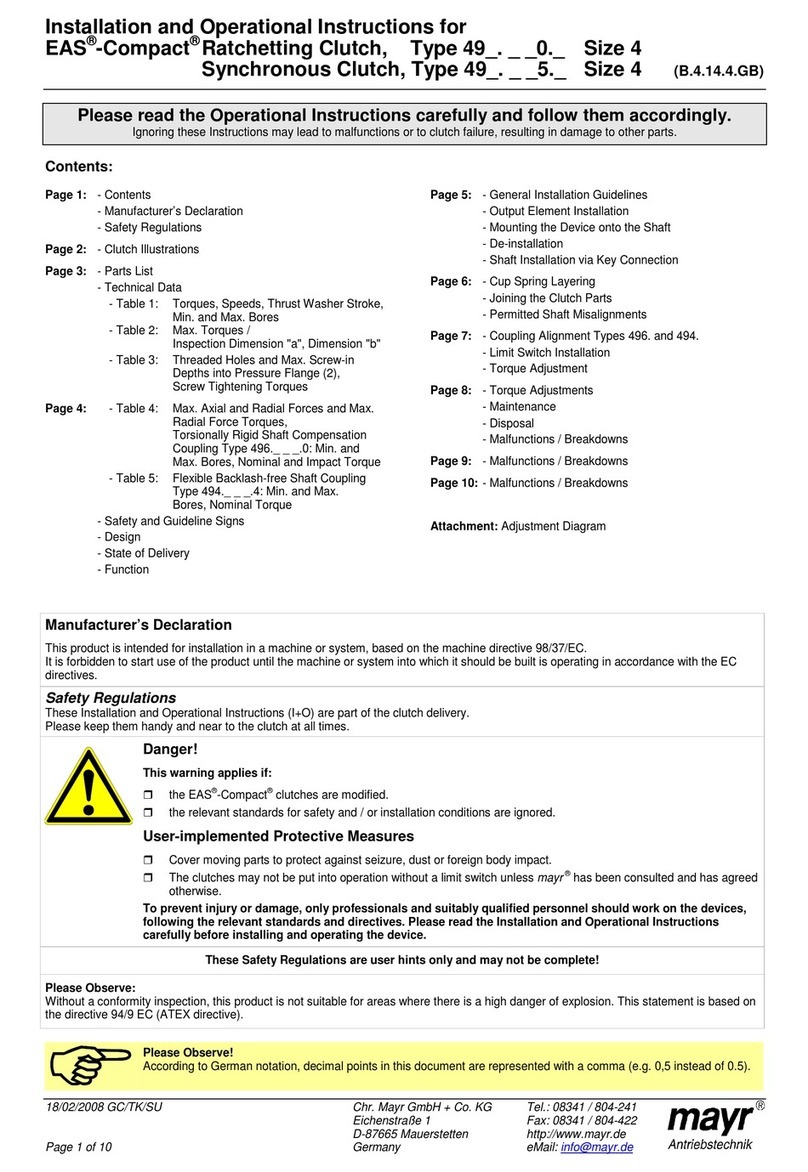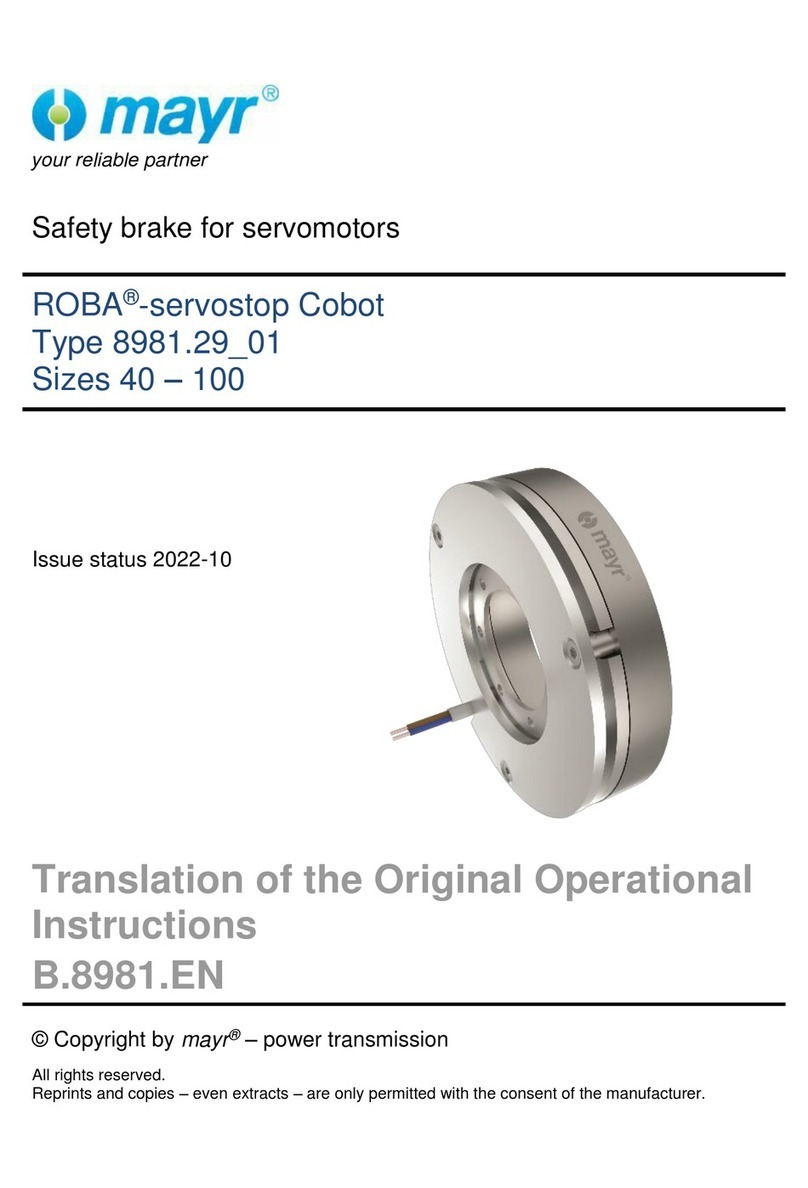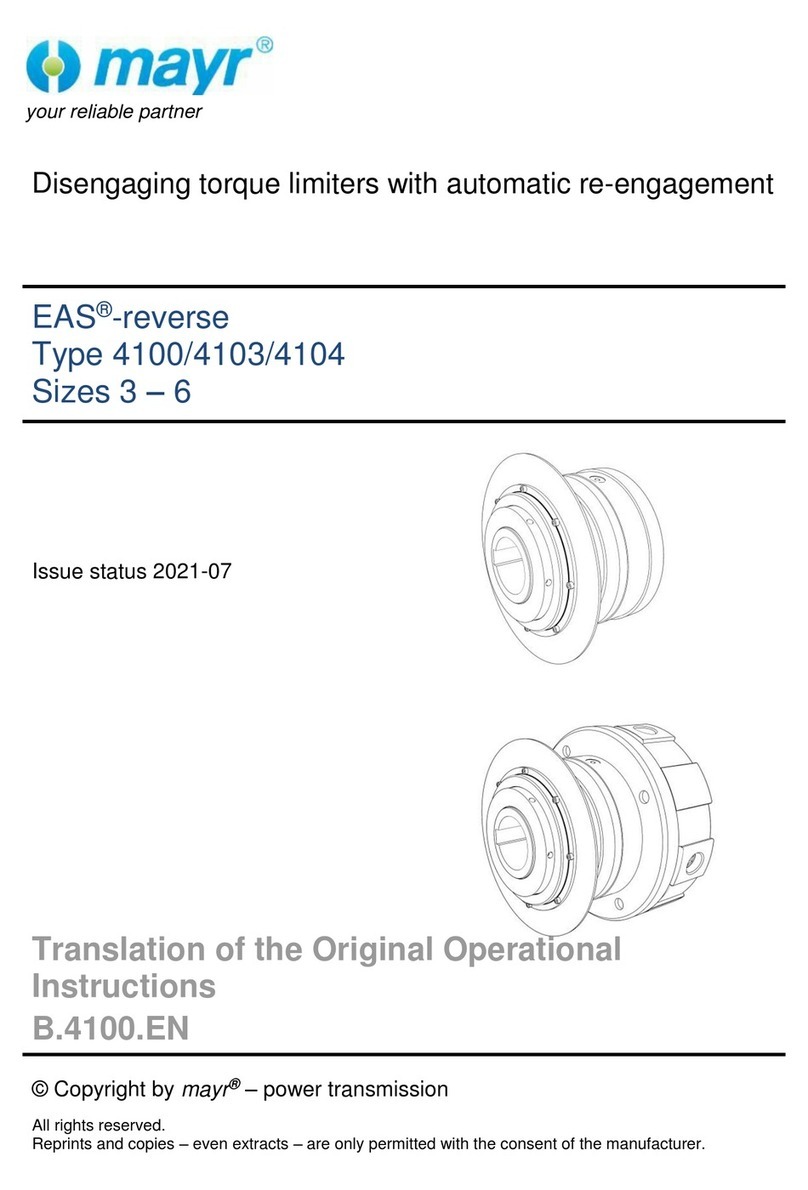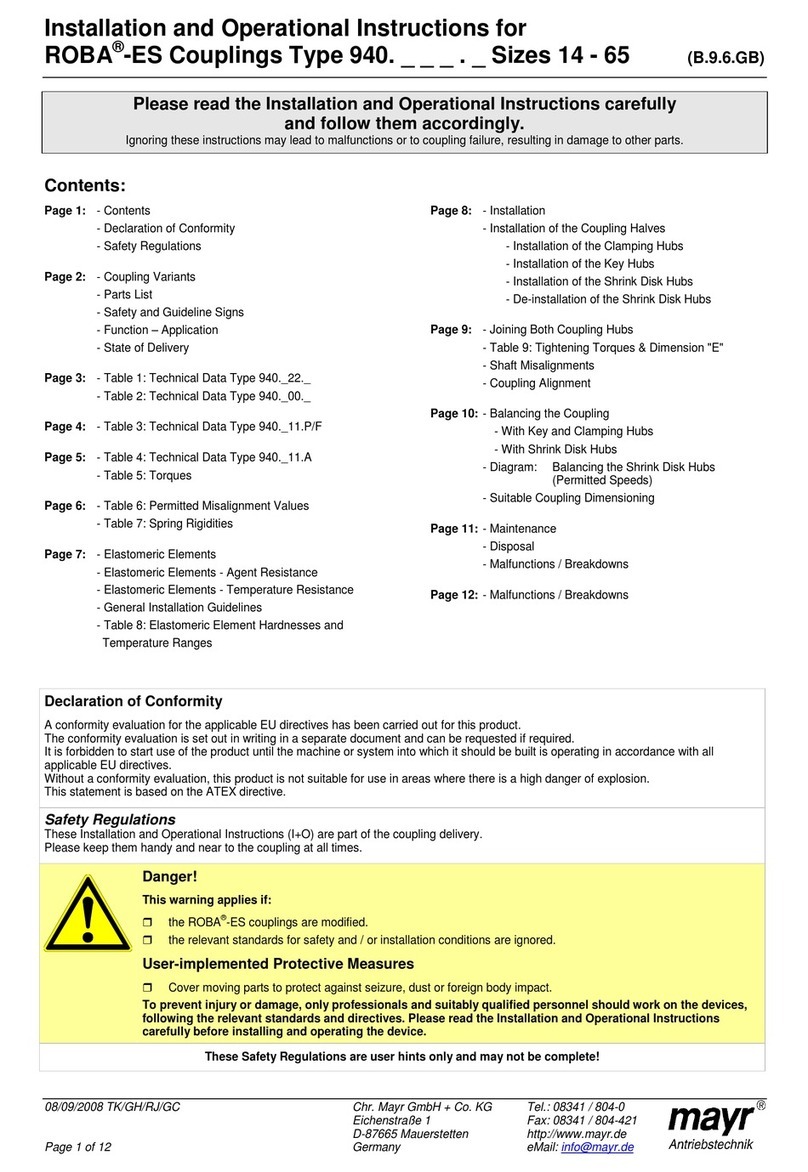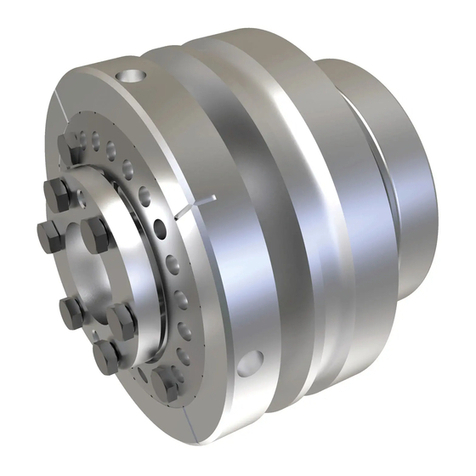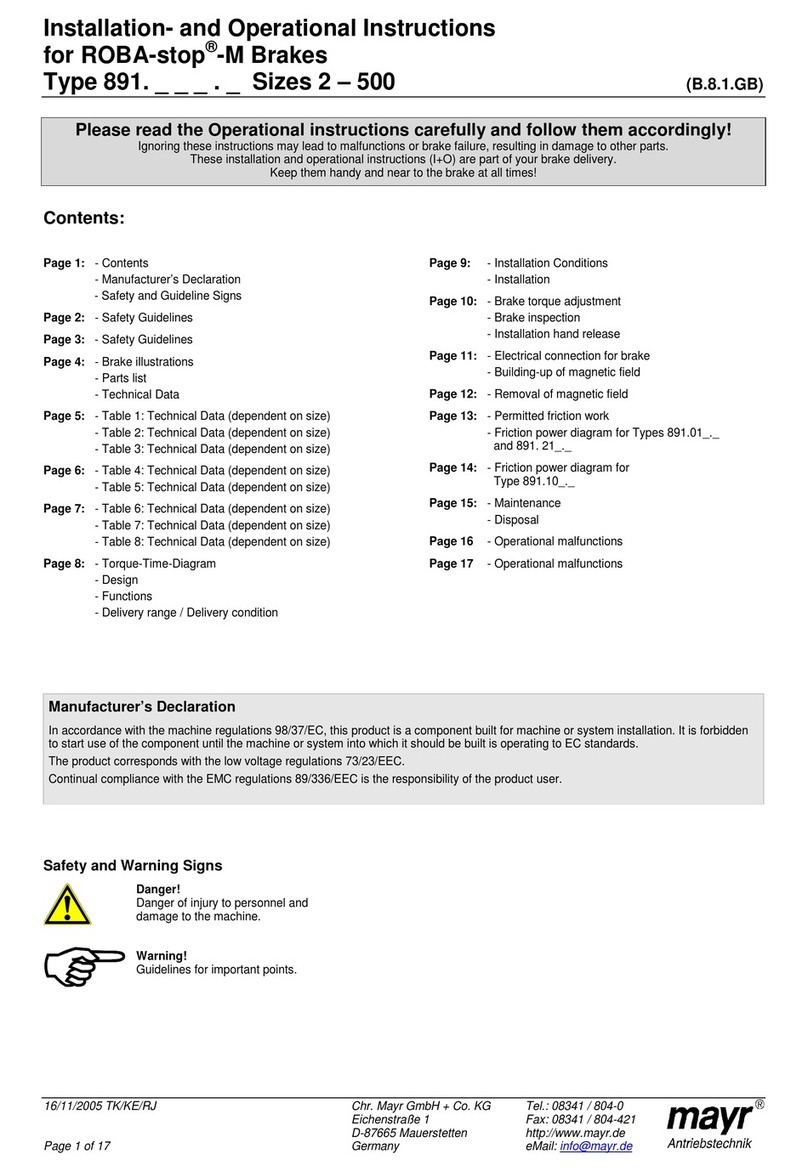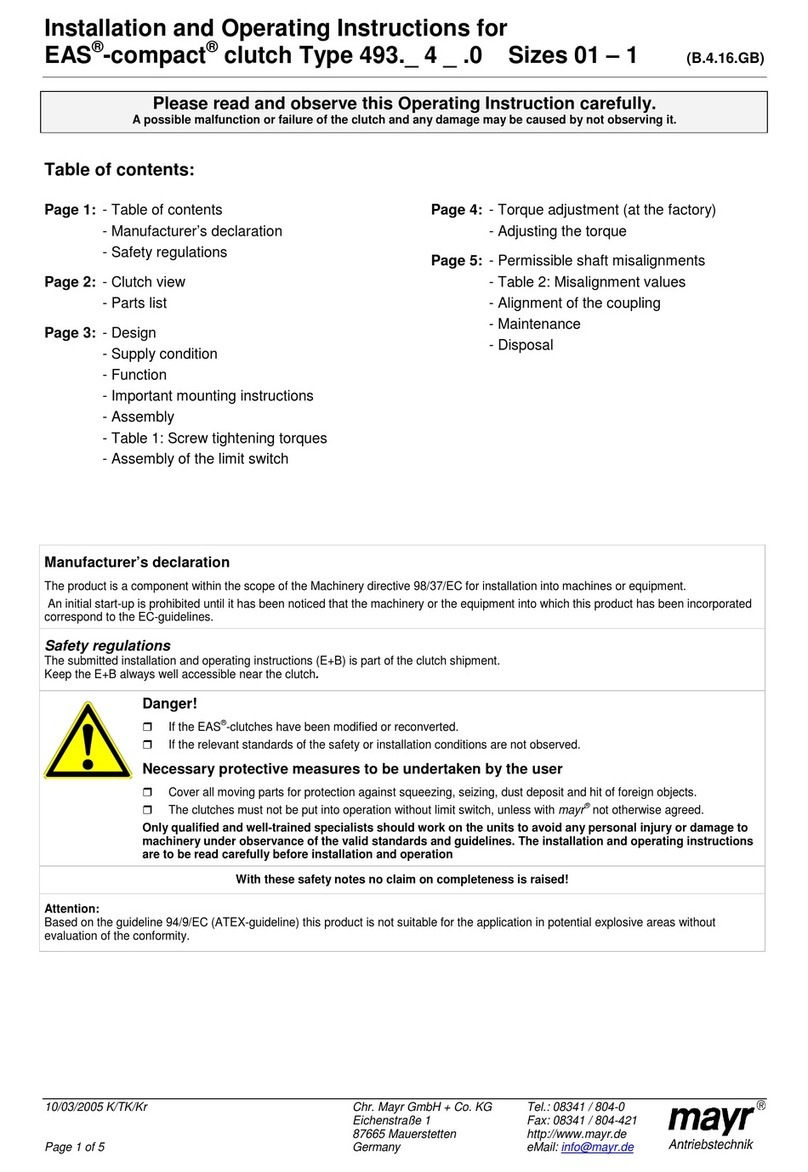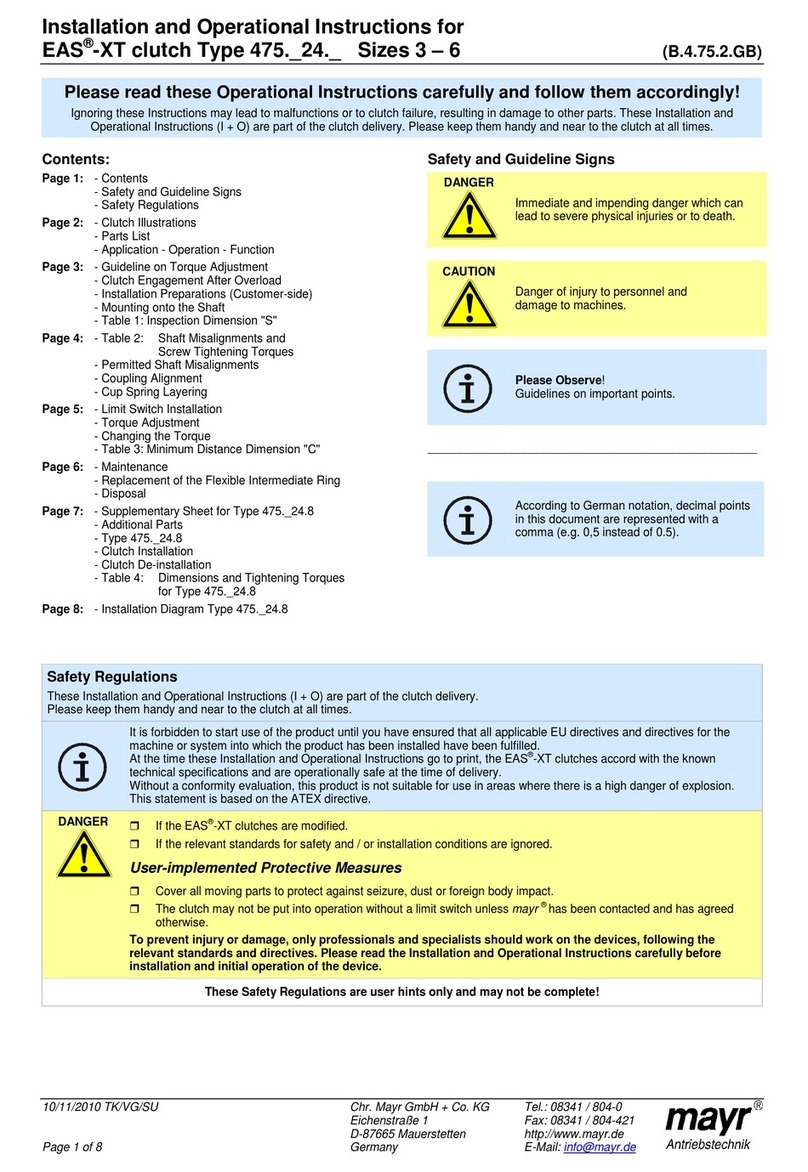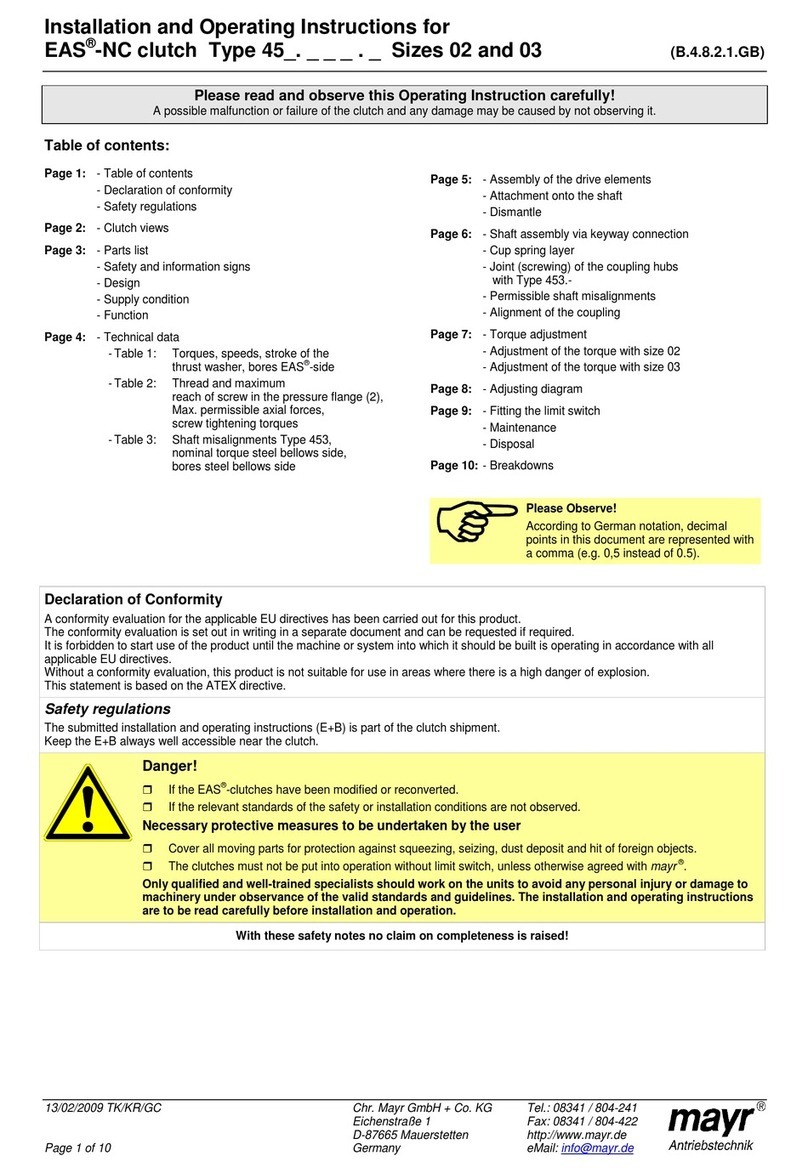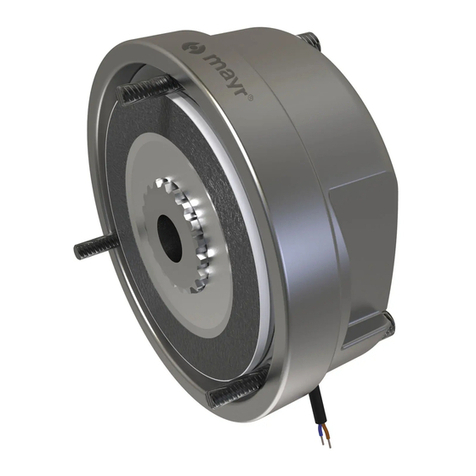
Installation and Operational Instructions for
ROBA®-takt clutch brake unit with 'energise to engage' brake
Type 67_.0_ _._ Sizes 3 to 7 (B.6.1.EN)
21/06/2018 GC/SI/EI/SU Chr. Mayr GmbH + Co. KG
Eichenstraße 1, D-87665 Mauerstetten, Germany
Tel.: +49 8341 804-0, Fax: +49 8341 804-421
Page 3 of 7 www.mayr.com, E-Mail: info@mayr.com
Safety Regulations
These Safety Regulations are user hints only and may not be complete!
Climate Conditions
The ROBA®-takt clutch brake unit is suitable for applications with
an ambient temperature of between -20 °C and +40 °C.
Reduction in torque possible
Condensation can form on the friction surfaces
and cause a loss in torque:
due to fast changes in temperature
at temperatures of around or under
freezing point
The user is responsible for taking appropriate
countermeasures (e.g. forced convection,
heating, drain screw).
Malfunction of ROBA®-takt clutch brake unit
possible
Condensation can form on the friction surfaces
and cause malfunctions:
at temperatures around or under freezing
point, the clutch brake unit can freeze over
and not disengage any more.
The user is responsible for taking appropriate
countermeasures (e.g. forced convection,
heating, drain screw).
Intended Use
mayr®-clutch brake units have been developed, manufactured
and tested in compliance with the DIN VDE 0580 standard and in
accordance with the EU Low Voltage Directive as electromagnetic
components. During installation, operation and maintenance of the
product, the requirements for the standard must be observed.
mayr®-clutch brake units are for use in machines and systems
and must only be used in the situations for which they are ordered
and confirmed. Using them for any other purpose is not allowed.
Earthing Connection
The clutch brake unit is designed for Protection Class I. This
protection covers not only the basic insulation, but also the
connection of all conductive parts to the protective conductor (PE)
on the fixed installation. If the basic insulation fails, no contact
voltage will remain. Please carry out a standardised inspection of
the protective conductor connections to all contactable metal
parts!
Class of Insulation F (+155 °C)
The insulation components on the magnetic coils are
manufactured at least to class of insulation F (+155 °C).
Protection IP55
Dust-proof and protected against contact as well as against jet
water from a nozzle coming from any direction.
Storage of ROBA®-takt clutch brake units
Store the clutch brake units in a horizontal position, in dry
rooms, dust and vibration-free.
Relative air humidity < 50 %.
Temperature without major fluctuations within a range from
-20 °C up to +40 °C.
Do not store in direct sunlight or UV light.
Do not store aggressive, corrosive substances (solvents /
acids / lyes / salts / oils / etc.) near to the brakes.
For longer storage of more than 2 years, special measures are
required (please contact the manufacturer).
Storage acc. DIN EN 60721-3-1 (including the limitations /
additions described above): 1K3; 1Z1; 1B1; 1C2; 1S3; 1M1
Handling
Before installation, the clutch brake unit must be inspected and
found to be in proper condition.
The clutch brake unit function must be inspected both once
attachment has taken place as well as after longer system
downtimes, in order to prevent the drive starting up against
possibly seized friction surfaces.
User-implemented Protective Measures:
Please cover moving parts to protect against injury
through seizure.
Attach a cover to protect against injury through high
temperatures on the housing
Protection circuit: When using DC-side switching, the coils
must be protected by a suitable protection circuit according
to VDE 0580, which is integrated in mayr®-rectifiers. To
protect the switching contact from consumption when using
DC-side switching, additional protective measures are
necessary (e.g. series connection of switching contacts).
The switching contacts used should have a minimum contact
opening of 3 mm and should be suitable for inductive load
switching. Please make sure on selection that the rated
voltage and the rated operating current are sufficient.
Depending on the application, the switching contact can also
be protected by other protection circuits (e.g. mayr ®-spark
quenching unit, half-wave and bridge rectifiers), although this
may of course then alter the switching times.
Install additional protective measures against corrosion if
the clutch brake unit is subject to extreme ambient
conditions or is installed in open air conditions, unprotected
from the weather.
Take precautions against freeze-up of the friction
surfaces in high humidity and at low temperatures.
